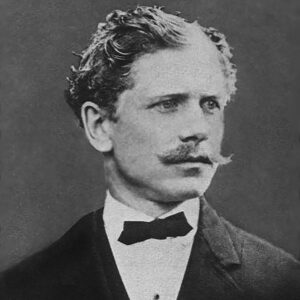Buried treasure nowadays sounds like just a kid’s story. But for some adults, the Oak Island treasure off Mahone Bay, Nova Scotia, is their life’s pursuit.
What is the treasure? No one knows, except that it is worth millions of dollars. While this is not a lot to go on, the uncertainty has not stopped a flood of treasure hunters, archaeologists, and even politicians and actors from taking a crack at the mystery.
The beginning of a legend
Eighteenth-century coastlines bristled with pirates and privateers. (Privateers were kind of a government-sponsored pirate.) One swashbuckling figure was Captain William Kidd. The British captured and executed the Scottish brigand in 1701, but his name somehow caught on. An anonymous author composed The Ballad of Captain Kidd, which referenced “ninety bars of gold, and six dollars manifold, with riches uncontrolled.” Variously, his loot was said to contain Marie Antoinette’s jewels, the Ark of the Covenant, the Holy Grail, and even proof that Francis Bacon wrote Shakespeare’s plays.
But what does 57-hectare Oak Island have to do with this?

Captain William Kidd (c.1645-1701), shown here burying a Bible near Plymouth Sound. Photo: Everett Collection/Shutterstock
Oak Island’s early history was relatively uneventful. It was possibly settled by the Mi’kmaq people, who lived in the Newfoundland and Nova Scotia area thousands of years ago. European settlers arrived in the mid-1700s. Tales of buried treasure only started to circulate in the 1850s.
The Liverpool Transcript published an article on August 8, 1857, written by one J.P. Forks. He wrote that “some very industrious individuals have buried large sums in endeavoring to unbury larger ones supposed to have been deposited by the renowned Capt. Kidd. They have sunk their money but have left holes open.”
Years later, in 1862, a story by J.B McCully stated that the tales of Captain Kidd began with the settlers. On his deathbed, a former member of Captain Kidd’s crew had allegedly told the settlers that they had buried about “two million pounds” of treasure on Oak Island. While there is little evidence of Kidd’s activities in the area, it did not stop the story from taking root. In 1864, The Colonist reported the possible discovery of the treasure’s location.
The money pit
In the late 1790s, a teenager named Daniel McGinnis supposedly came across a set of strange markings on an oak tree, and an odd depression in the ground next to it. Intrigued, he enlisted the help of friends John Smith and Anthony Vaughn. Familiar with the Captain Kidd stories, they started to dig.
They found a shaft with oak platforms every three metres and markings from tools on the walls. They stopped after nine metres when they encountered water. Some accounts claim that they stopped because of superstitious fears. The hole became known as the Money Pit.

The Money Pit. Photo: The History Channel
Companies including The Oak Island Association, the Truro Company, the Halifax Company, the Old Gold Salvage Group, and Triton Alliance poured in millions of dollars worth of labor and equipment to solve the mystery. Even politicians and celebrities such as Franklin D. Roosevelt, Errol Flynn, and John Wayne pitched in.
But eventually, most treasure seekers gave up. While they turned up more shafts and some intriguing artifacts, they found no treasure trove. Eventually, after so much activity on the island, the Canadian government passed the Oak Island Treasure Act in 2011, granting treasure hunters licenses to dig. In 2014, Rick and Marty Lagina launched a reality series dedicated to finding the lost treasure called The Curse of Oak Island on The History Channel.
Several people have died pursuing the treasure. In the 1960s, Robert Restall and his son tried to seal flood tunnels but lost consciousness and died from carbon monoxide poisoning. Two others who tried to retrieve them died as well. This gave rise to the rumor that Oak Island was cursed.
What was found?
Another story claims that a company called the Onslow Company traveled to Oak Island in 1802. They found more oak platforms, coconut fibers, mud, metal shards, and a large granite stone measuring 60cm long, 38cm wide, and weighing 79kg. The stone featured mysterious markings that supposedly translated into “40 feet below, two million pounds are buried”. Historian Edward Rowe Snow provided the translation, who received it from a Reverend A.T. Kempton, who claimed to receive it from his friend, a school teacher. The Onslow Company eventually stopped digging because of constant flooding. However, there is no official record of this company’s activities on Oak Island. These “accounts” are all word of mouth.
Where is the stone now? It was last seen in 1919, in the hands of Creighton’s Bookbindery. The stone vanished into thin air when the bookbindery closed.

Red garnet brooch. Photo: Pinterest
Mysterious objects
Various expeditions found tantalizing objects on Oak Island. These include a rhodolite garnet brooch, approximately 500 years old, and possibly connected to Marie Antoinette or the Knights Templar. Another is a medieval cross, possibly from between 1200-1600. Over the years, people found silver and gold buttons, a silver Spanish ring, a Maravedis coin dating from 1500-1600, a Knights Templar coin, scissors, swages, gold links, metal spikes, a 17th-century ax, a whistle, a stone triangle, a heart-shaped stone, and five large boulders forming a cross with images of a human face and sword. Bone fragments of European and Middle Eastern ancestry were also present.
Aficionados of the mystery can’t explain how these items found their way to an obscure island off the coast of Canada, but it has encouraged them to believe that there is more to be found.
In addition to the objects, researchers uncovered an intricate flood tunnel and box drain system near Smith’s Cove. These tunnels were repeatedly flooded, which caused researchers to suspect that they could be a defense mechanism to prevent further digging. Coconut fibers at the site were more than 700 years old, and the nearest coconut trees were thousands of kilometres away.
False discoveries
In 2015, news broke of a find off the coast of Madagascar. It was a 50kg bar, potentially made of silver, with the letters S and T inscribed on its surface. The bar was presented to Madagascar’s president as the first piece of Captain Kidd’s treasure, without any analysis or verification.
Later, researchers found it was 95% lead and came from a construction site on Sainte Marie Island. They dated the metal to 17th-century Bolivia.

Lead bar found in Madagascar. Photo: Malagasy Presidency
Theories
Depending on who you ask, there are a few people who could have buried treasure on Oak Island: Captain Kidd, the Knights Templar, Marie Antoinette’s lady-in-waiting, or perhaps Spanish or British soldiers during the American Revolution and Seven Years War.
To some, it is inconceivable that the Money Pit does not contain any treasure at all. Geologist Steven Aitken and skeptic Joe Nickell are trying to burst this bubble. Aitken, who is an expert in carbonate sedimentology, believes that the Money Pit is actually a sinkhole. The surrounding rock is limestone and gypsum, which can be porous and permeable. He believes the bedrock dissolved to form a cave, whose roof then collapsed. There is evidence to support his theory. In 1878, a woman named Sophie Sellers suddenly sank into the ground near the Money Pit.
Freemasons?
Joe Nickell supported this theory and believed that the Freemasons used Oak Island for rituals. He believed that some of the artifacts, including the stone triangle and heart-shaped stone, were Masonic symbols from these rituals. This might explain known Freemasons Franklin Roosevelt and John Wayne’s interest in Oak Island.
As we weigh the evidence, we confront mostly hearsay and legend. There is evidence of more activity on the island than previously thought, but treasure? There is no proof. All that remains is hope, and the determination of some to keep searching.






